There’s a rustic charm about Bandhavgarh Jungle Lodge. With a total of 18 rooms, including 14 cottages along with four rooms in a separate villa, the architecture is inspired by traditional village-style homes. The sloping baked-earth roofs; colourful, indigenous furnishings along with tribal art, are an ode to the rich heritage of this wonderful region of India. Welcome to your ‘home’ where you lose – and subsequently discover – yourself.
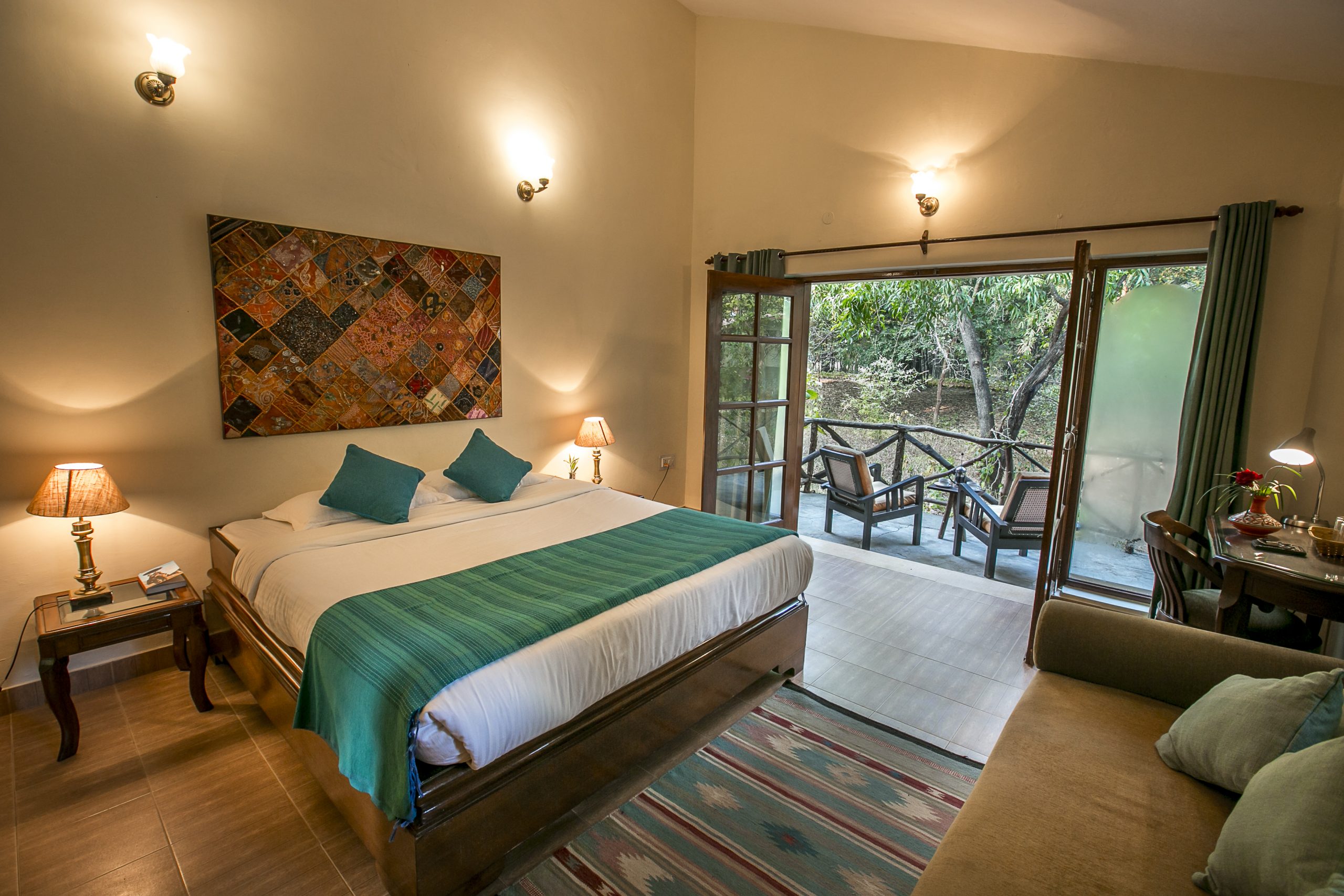
Wandering through the environs of this beautiful ‘home’ in the jungle, Bandhavgarh Jungle Lodge offers interesting experiences. Wander through the grounds of this lodge, soak in the knowledge of medicinal herbs and plants that grow here, along with an array of books that are available in the library section of the lodge.
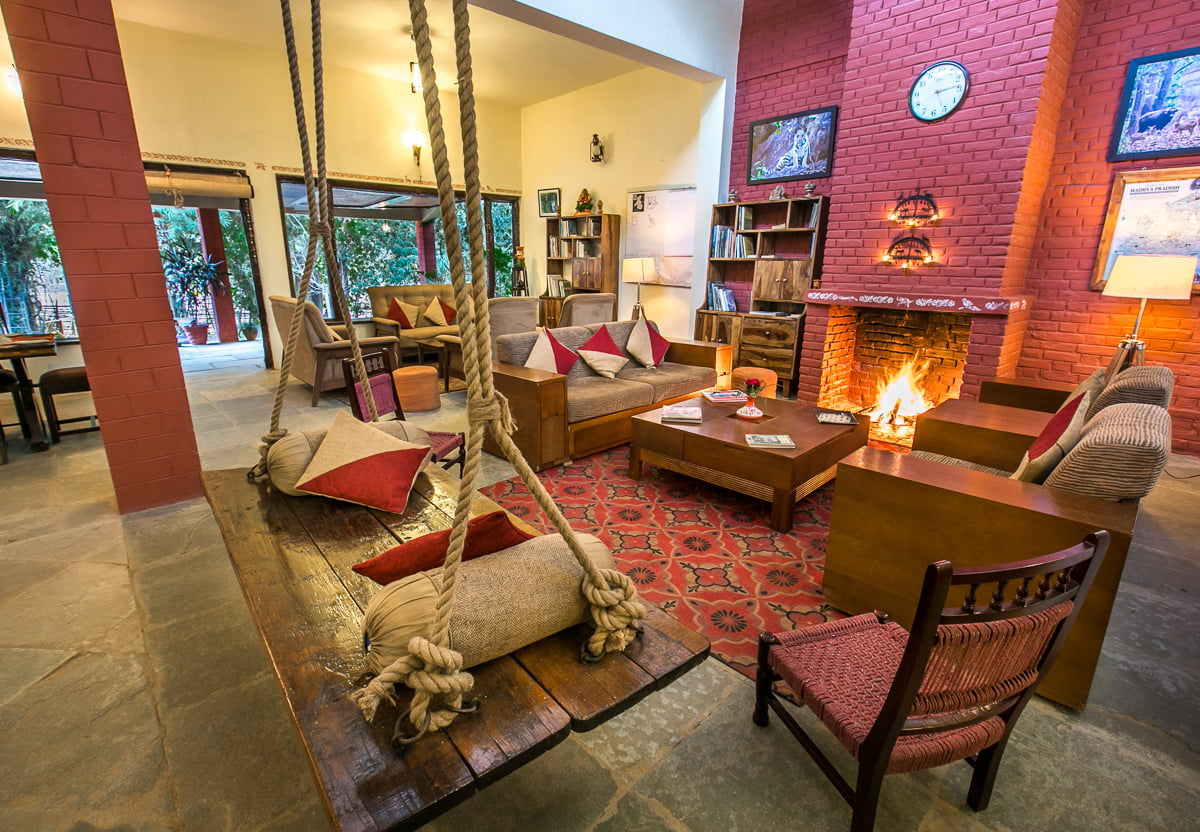
All rooms face the sun-kissed gardens or the forest area and the architectural adage, ‘bringing the outside, inside’ suits this property perfectly. Comfortable beds with handpicked linen, home décor, makes the stay warm and cosy. There is a writing table, adequate lighting, comfortable furniture in the balcony area for you to enjoy your hot cuppa in the midst of a forest. There is 24×7, hot and cold running water supply in the attached bathrooms, and room service for guests.
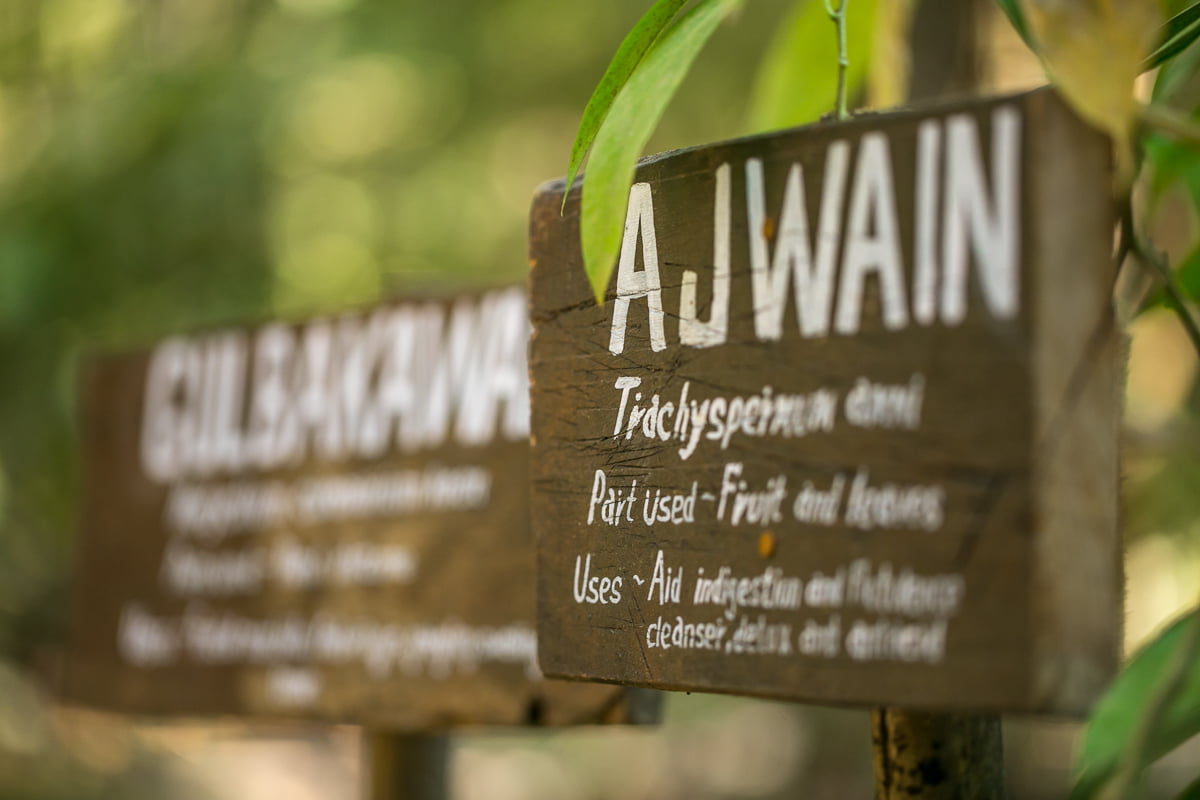
It’s an extraordinary feeling to take a tour of the medicinal garden set up after a lot of research done on the subject. With the involvement of locals who have the knowledge of indigenous trees and plants that boost immunity, the kitchen uses lots of immunity-boosting recipes for the benefit of the guests.
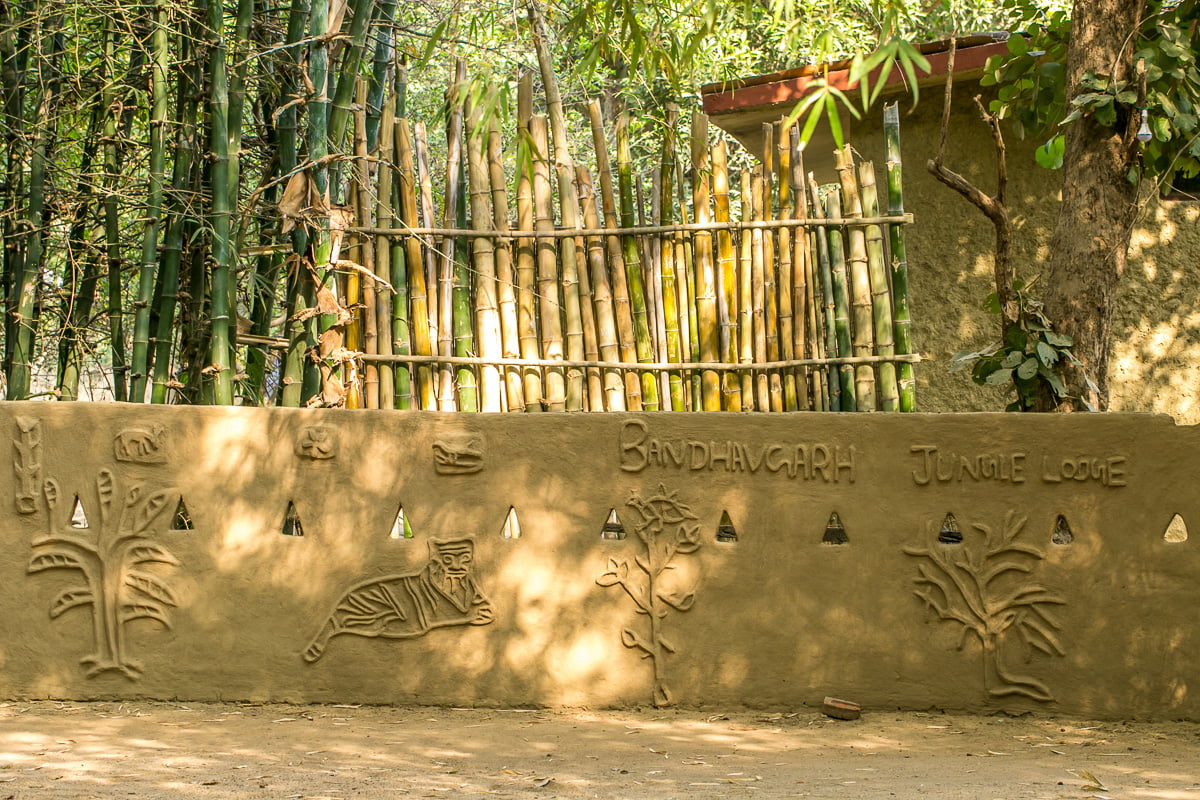
Given the strong ecological principles followed in the lodge, the promoters encourage solar measures for both, water heating and cooking thus ensuring that the carbon footprint of the eco traveller is reduced considerably. Taking this initiative further, the promoters have worm-decomposing to make efficient and hygienic disposal of organic waste.
Meals are served in a common dining area that’s spacious for you to enjoy privacy and cosy enough for you to feel relaxed. With a seating capacity of 40, the verandah area allows you to unwind, enjoy breakfast even as sunlight streams through the foliage of saltrees. Enjoy a glass of fresh juice while browsing through books in the library section that’s been created around here.
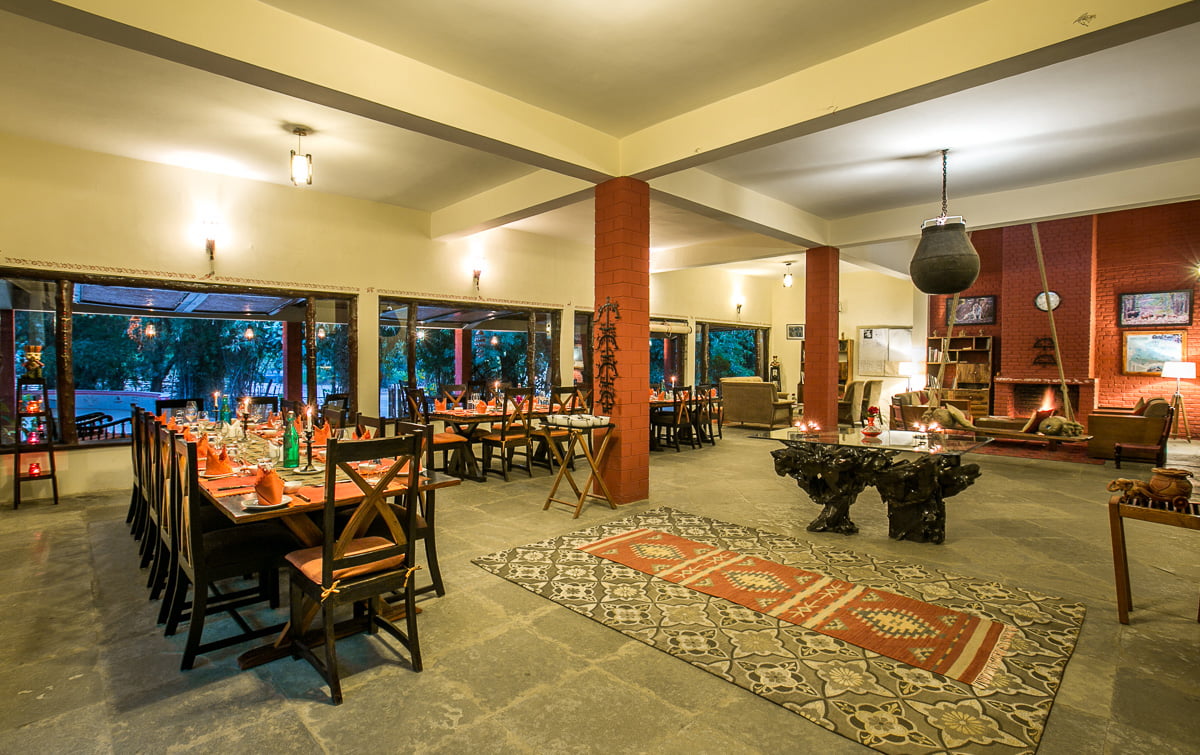
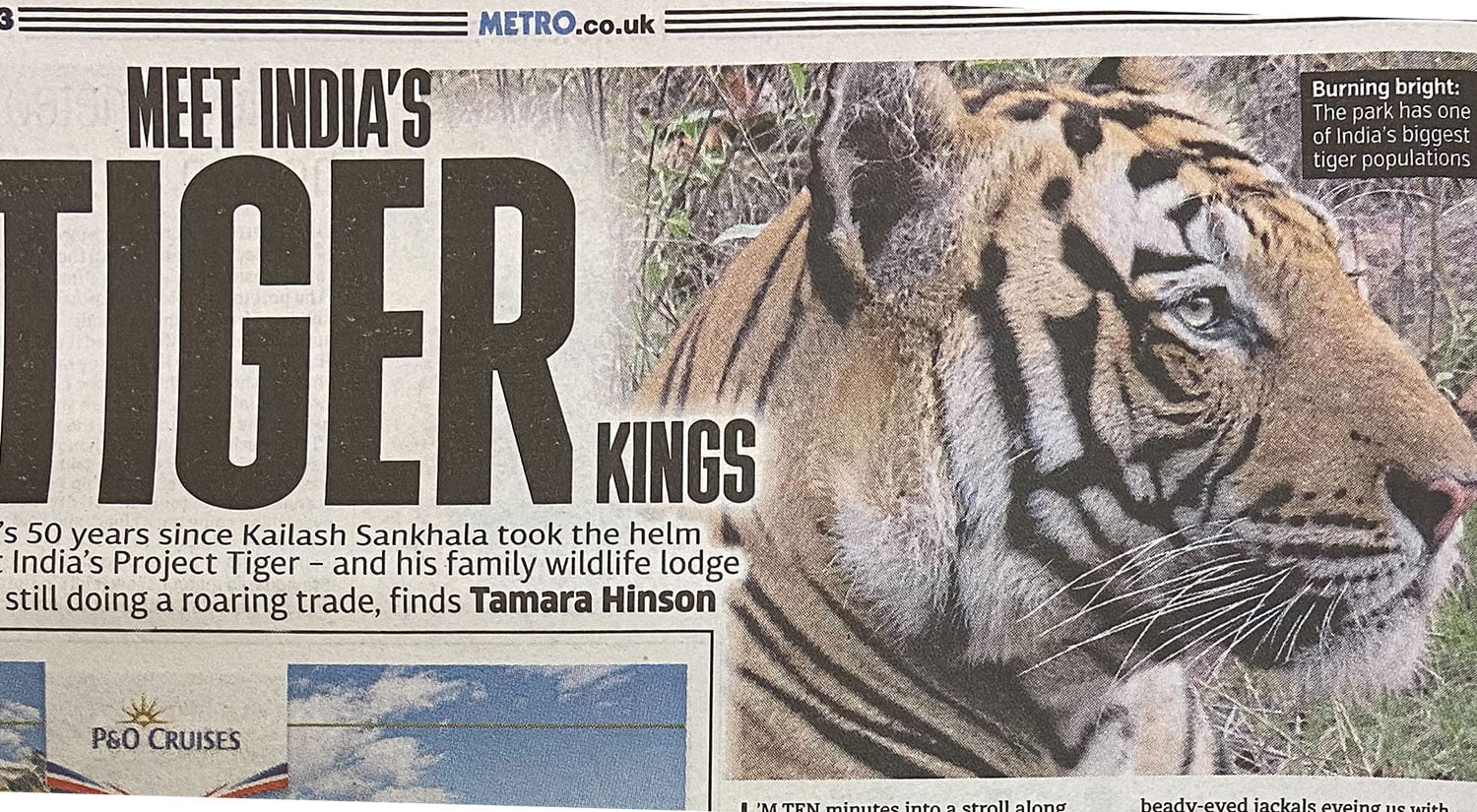
It’s 50 years since Kailash Sankhala took the helm at India’s Project Tiger - and his family wildlife lodge is still doing a roaring trade, finds Tamara Hinson. MTEN minutes into a stroll along Bandhavgarh National Park’s boundary when I start questioning my keenness to see the wildlife. My companion is naturalist Simranjit, whose stories amuse and terrify in equal parts. He chuckles when he realises I mistook the flimsy fence for some kind of barrier.
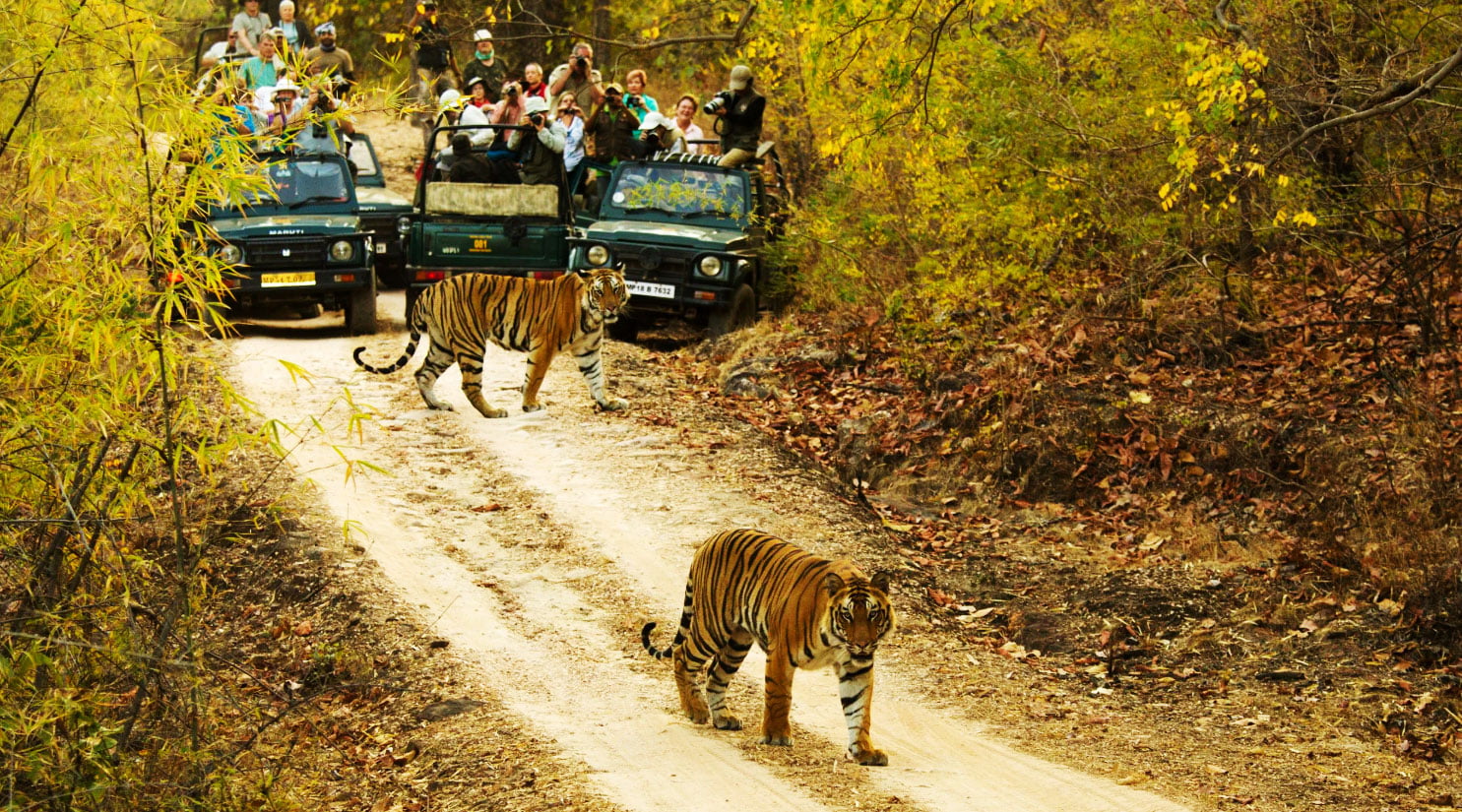
Alarm calls from monkeys grew increasingly shrill, the shrieks of peacocks ever louder. The jungle was on red alert. Such animal warnings about predators are just what you want to hear if you’re searching for a big cat in India: in this drum roll of agitation, our 4x4 rounded a corner and came to an abrupt halt. In front of us, a tiger had stepped out of the undergrowth.
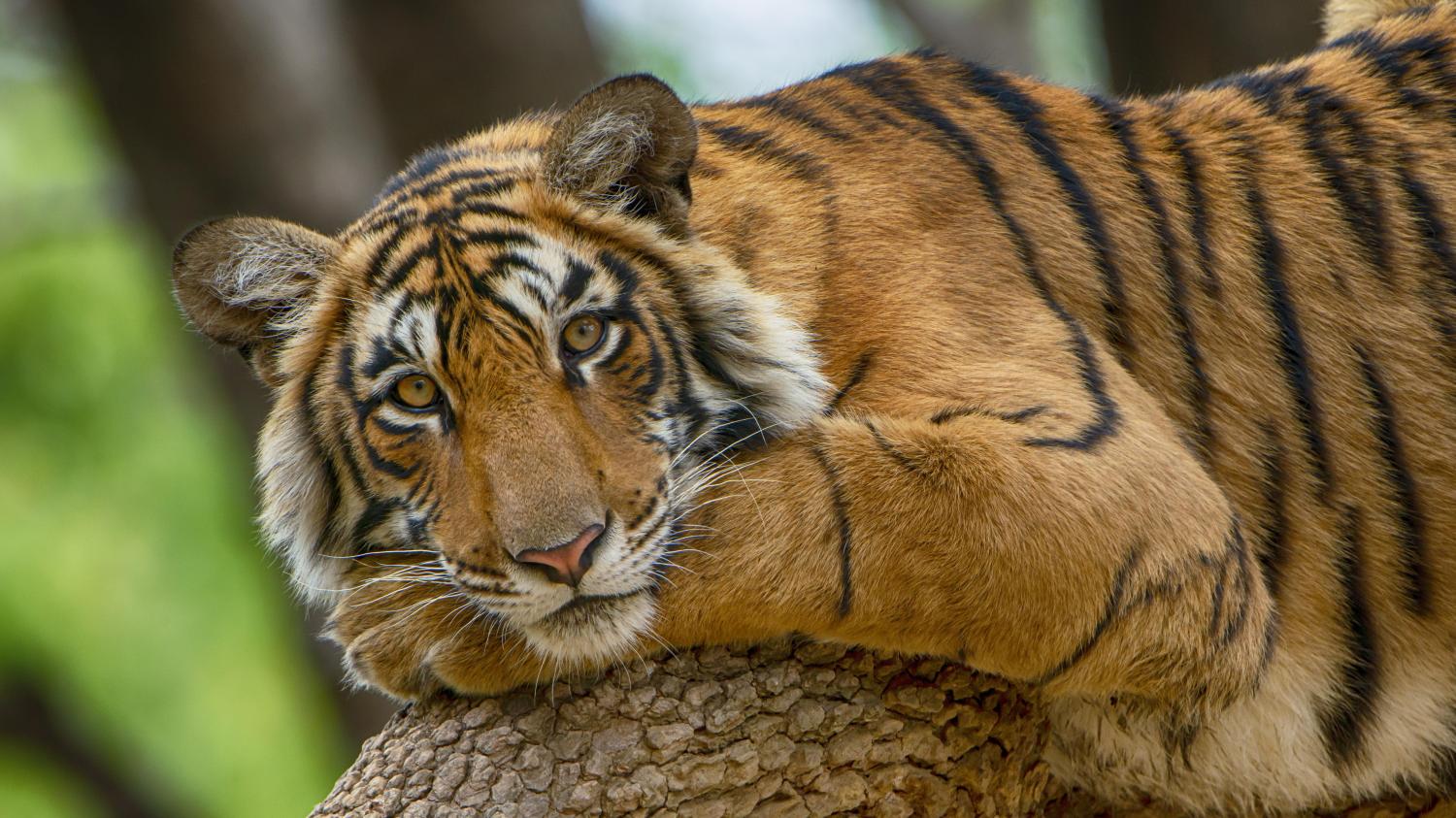
Poner Singh is a stubborn man. When India’s National Tiger Conservation Authority (NTCA) invited him to swap his hand-to-mouth existence in the teak forests of the Satpura Tiger Reserve for a free house and five acres of farmland on the outside, the father of two declined.
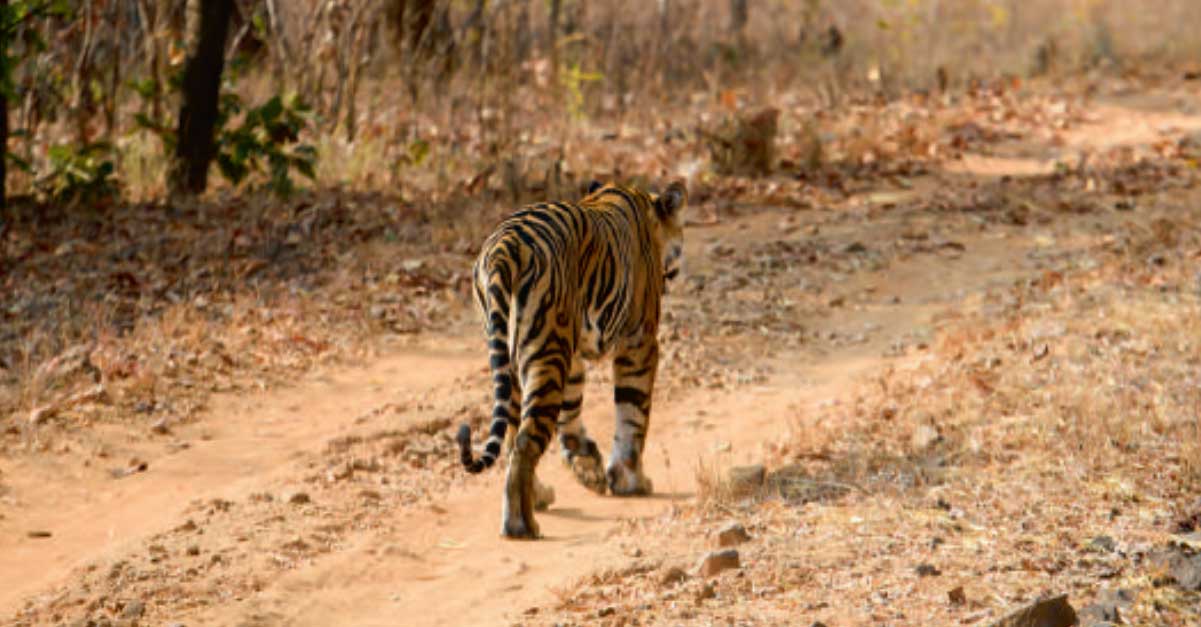
Sankhala is certain I’ll see a tiger. He tells me this as we bump along the dirt roads of Bandhavgarh National Park, India’s tiger country – 1,540km2 of swaying grassland and tropical forest where the mighty Bengal tiger roams freely.
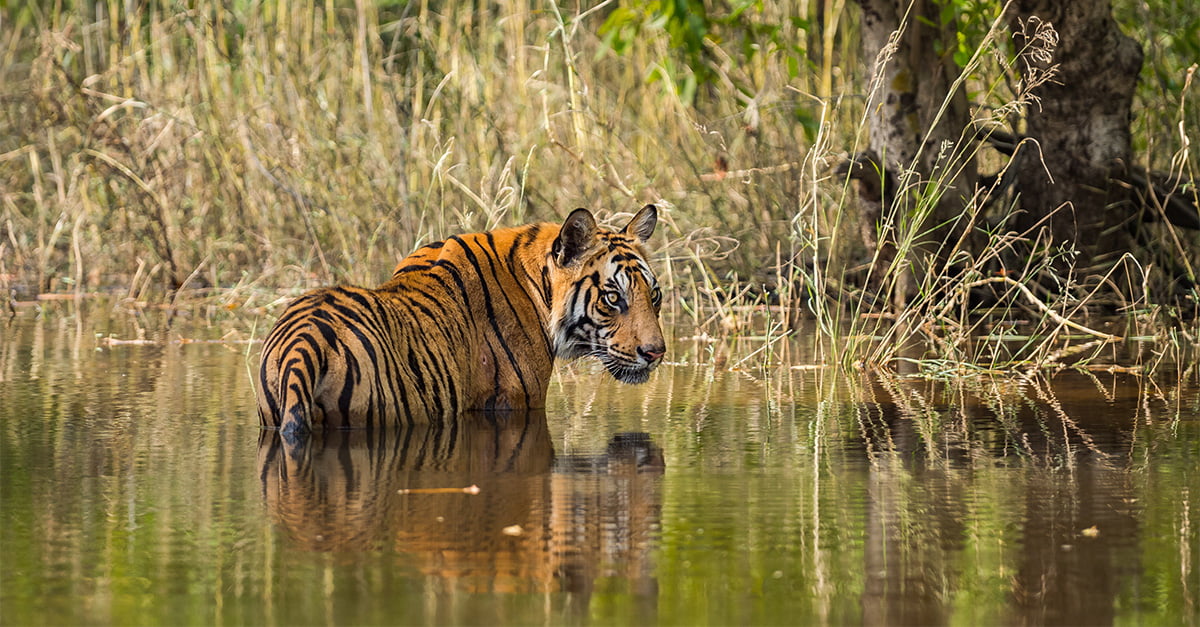
Tamara Hinson heads to Bandhavgarh National Park, one of India’s best conservation success stories, in search of big cats.
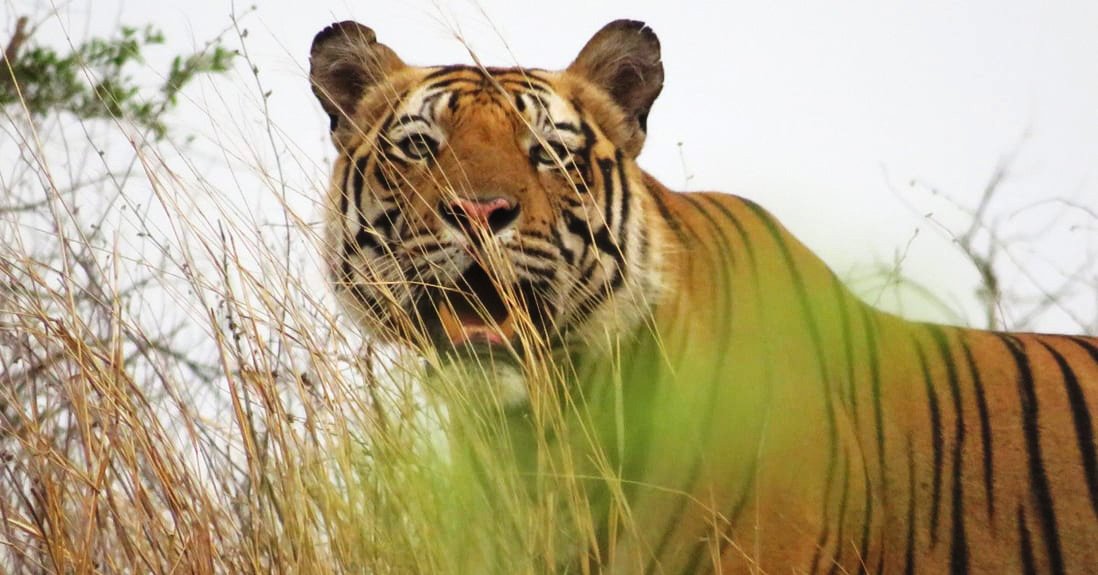
From the moment I enter Bandhavgarh National Park, it’s clear the wildlife is never far away.









